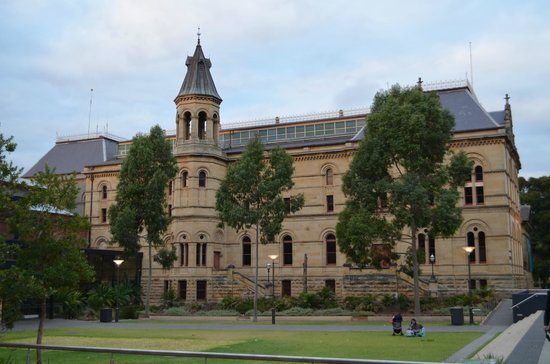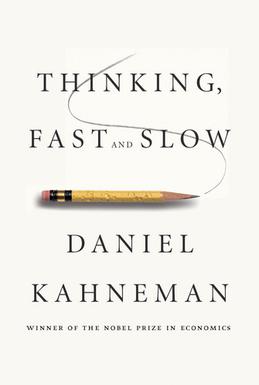[Note: This is a modified version of an article that first appeared in Museum Australia’s Evaluation and Visitor Research Network’s Spring 2014 newsletter]
Introduction
We’ve all seen it; we’ve all done it: Complete our survey and enter the draw to win! Agree to be interviewed and get a free pen! Researchers call these “participant incentives”, which generally speaking are defined as “benefit[s] offered to encourage a person to participate in a research program”.[1] Offering incentives is considered to be good practice in evaluation and visitor research. Visitors agree to give us time out of their visit for the benefit of our research, and it behoves us to value this time and use it ethically[2]. If we consider research as a social contract, incentives are a gesture of reciprocity, acknowledging the value of visitors’ time.
But what kind of incentive is appropriate for a given piece of research? What’s feasible? What’s ethical? What might be some unintended consequences? This article will explore some of the issues surrounding participant incentives.
The Bigger Picture
To understand the role of participant incentives, we first need to consider why people respond to surveys in the first place. There seem to be three main kinds of reasons: altruistic (people who want to help or see it as their civic duty); egotistic (having specific stake in the results, or simply enjoying doing surveys) and study-specific (interest in the topic or organisation)[3]. Incentives increase the “egotistic” reason for completing a survey. But appealing to respondent’s altruism can also increase response rates, as can the fact that many visitors hold museums in positions of high trust and regard.
Particularly for online surveys, incentives have been shown to increase the response rate, but this also depends on the length of the survey, who you’re trying to target and whether they have a stake in the research outcome[4]. As a general rule of thumb, you should state up-front how long any survey is going to take, and offer an incentive that reflects the time commitment you are requesting. For online surveys, anything taking longer than 20 minutes to complete counts as a “long” survey that warrants an incentive. One of the most popular incentives is to give participants the opportunity to enter a prize draw of something of considerable value (e.g. gift certificates valued at least $100, a tablet computer or similar items).
However, a higher response rate isn’t necessarily the ideal – irrespective of the response rate, your survey strategy should aim to minimise systematic differences between people who do respond and those who do not (nonresponse bias). This is distinct from overall response quality, which does not appear to be affected by incentives[5]. Nonetheless, if there is a particular target audience of interest (e.g. teachers, visitors who have participated in a particular programme, visitors from a particular cultural or ethnic group, etc.), you may need to consider ways to increase the response rate among those people in particular.
Compared to the use of incentives in telephone and online surveys, there is very little published research about the practicalities of conducting onsite visitor interviews in museums and similar sites. Rather, examples of practice are shared through informal networks (more on this later).
Ethical Guidelines
Neither the Australian Market & Social Research Society (AMSRS) Code of Professional Conduct[6] nor the Australasian Evaluation Society’s Guidelines for Ethical Conduct of Evaluations[7] specifically mention participant incentives, however both outline important principles with which any choice of incentive should comply. In particular, the AMSRS code specifies that there must be a clear delineation between market research and “non-research activities” such as promotions or compilation of databases for marketing purposes. This may have implications for what you can use as incentives, as well as how you use any contact details you collect for the purposes of prize draws.
Care should be taken to ensure that incentives cannot be interpreted as coercion, particularly if the incentive is large enough to cause certain participants (e.g. at-risk groups) to reluctantly participate in order to receive the incentive. In any case, it has been suggested that it may be better to increase intrinsic motivations rather than rely solely on monetary incentives[8].
Is it an Incentive, a Thank You, or Compensation?
The principle that monetary incentives should only be used as a last resort may appear at odds with the idea that visitors’ time is valuable and should be acknowledged as such. However, it’s largely to do with the way incentives are framed: an incentive can be considered an inducement to participate, but it can also be presented as a “thank you gift” that you give to visitors as a token of your appreciation. In this sense, the timing of the incentive may come into play. Giving an incentive in advance may increase participation and there is no evidence that it raises a sense of obligation among potential participants[9].
There is another type of payment that we should briefly mention here, and that is compensation. This is particularly relevant where participation incurs costs direct costs (e.g. travel to a focus group session). Any costs that participants so incur must always be compensated.
Some Examples
In September 2014, there was a discussion on the Visitor Studies Association (VSA) listserv about the incentives that different institutions give away to visitors who participate in short (<5-10 minutes) onsite surveys. Among this community of practice, the respective merits and drawbacks of different approaches were discussed[10]. The key points are summarised below:
| Incentive |
Features |
Drawbacks / Considerations |
| Vouchers for in-visit added extras(e.g. simulator rides, temporary exhibitions, etc.) |
Adds value to visitors’ experience with little or no direct cost to Museum |
May lead to unanticipated spikes in demand for additional experiences – e.g. can the simulator accommodate everyone who’s given a voucher? |
| Small gifts(e.g. pens/pencils, stickers, temporary tattoos, bookmarks, postcards, key-rings) |
Tangible and popular gifts, especially for children.If you’re surveying adults in a family group, giving children a few items to choose from can keep them usefully occupied while the adults respond to the survey.Cheap if purchased in bulk.
|
Gift needs to match target audience of survey (e.g. temporary tattoos are great for kids, less so for adult responders)Children may end up using stickers to decorate your exhibits! |
| Food / coffee / ice cream vouchers |
Generally popular and well-received. |
Can create a rush in the café if you’re doing large numbers of surveys.May be limited by the contract arrangements in place with caterers. |
| Prize draws |
Popular with visitors and practical to implement with online surveys.Cost of a single big-ticket prize may work out cheaper than hundreds of small giveaways. |
Visitor contact details must be recorded for prize draw. These details must be able to be separated from the survey responses to maintain anonymity.Be aware that offering a free membership as a prize may reduce membership take-up during the survey period[11]. |
| Gift certificates |
Can be used for longer surveys or detailed interviews that involve a longer time commitment and therefore warrant a higher value incentive. |
Gift certificates may be seen as equivalent to cash from a tax perspective. |
| Free return tickets |
No direct costs. Tickets can be given away to friends and family if participants can’t re-visit. |
Not relevant to free-entry institutions.Could be perceived as marketing. |
| Discounted museum membership |
Encourages a longer term relationship with the visitor. |
Not an attractive incentive for tourists. |
Conclusions
Incentives are established good practice in evaluation and visitor research, and are generally intended to represent a token of appreciation for visitors’ time. Although incentives can increase response rates, this is not necessarily the principal reason why incentives are used. Like all aspects of visitor research, decisions regarding the size, nature and timing of giving visitor incentives must be clearly thought through from an operational, financial and ethical perspective at the outset of the research. Done well, incentives offer the dual benefits of increasing responses and creating a sense of good will among visitors.
References
[1] Arts Victoria. (n.d.) Visitor Research Made Easy, p. 82 (sourced from: http://www.arts.vic.gov.au/Research_Resources/Resources/Visitor_Research_Made_Easy)
[2] Bicknell, S., and Gammon, B. (1996). Ethics and visitor studies – or not? Retrieved from: http://informalscience.org/images/research/VSA-a0a4h9-a_5730.pdf
[3] Singer, E., and Ye, C. (2013) The use and effects of incentives in surveys. Annals of the American Academy of Political and Social Science, Vol 645, 112-141
[4] Parsons, C. (2007) Web-based surveys: Best practices based on the research literature. Visitor Studies, Vol 10(1), 13-33.
[5] Singer & Ye (2013).
[6] http://www.amsrs.com.au/professional-standards/amsrs-code-of-professional-behaviour
[7] http://www.aes.asn.au/images/stories/files/membership/AES_Guidelines_web.pdf
[8] Singer & Ye (2013).
[9] Singer & Ye (2013).
[10] Contributors to this discussion included (in alphabetical order): Stephen Ashton, Sarah Cohn, Susan Foutz, Ellen Giusti, Joe Heimlich, Karen Howe, Amy Hughes, Elisa Israel, Kathryn Owen, Beverly Serrell, Marley Steele Inama, Carey Tisdal and Nick Visscher (with apologies to any contributors who have been missed). VSA listserv archives can be accessed via https://list.pitt.edu/mailman/listinfo/vsa
[11] Visitor Research Made Easy, p. 60.





















